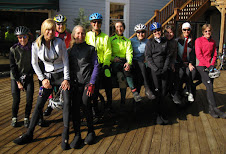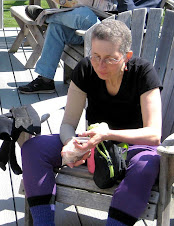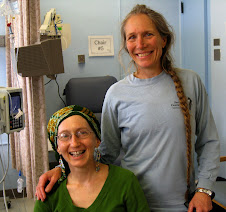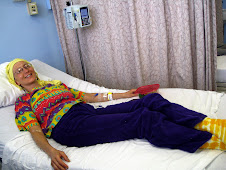~
~
Thursday, May 10, 2012
In the article below, THIS is what we're worried about, for me. . : ` , '. : ` , '. : ` , '. : ` , ` , '. : ` , '. : ` , '. : ` , '. : ` , '
. : ` , '. : ` , '. : ` , '. : ` , '. : ` , '
osteonecrosis of the jaw
` , '. : ` , '. : ` , '.` , '. : ` , '. : ` , '. : ` , : ` ,
This has ALWAYS been the worry. Teeth and jaw. The fact that a tooth was resorbed is scary and ominous; it's how this starts sometimes. I'm planning to get THREE implants even though they are unbelievably expensive, because they will even out the pressure (chewing and grinding) so that more teeth/implants share the burden -- and ALSO so that the jaw is stiulated.. : ` , '. : ` , '. : ` , '. : ` , '. : ` ` , '. : ` , '. : ` , '. : ` ,
I guess this is news that the FDA is admitting the problem. But it's a bit like water is wet.... not really news. Well maybe it will make dentists & endodontists take it more seriously so that people with family and personal histories like mine who do their best to figure out ahead of time what they should do will be told NOT to do it..` , '. : ` , '. : ` , '. : ` ,
In the meantime I am hoping to save the rest of my teeth (just 21 now) and my jaw..... : ` , '. : ` , '. : ` , '. : ` , '. :
. : ` , '. : ` , '. : ` , '. : ` , '. : ` , '. : ` , '. : ` , '. : ` , '. : ` , '. : ` , '
. : ` , '. : ` , '. : ` , '. : ` , '. : ` , '
` , '. : ` , '. : ` , '. : ` , ` , '. : ` , '. : ` , '. : ` , ` , '. : ` , '. : ` , '. : ` ,
New Cautions About Bisphosphonates - NYTimes.com
http://well.blogs.nytimes.com/2012/05/09/new-cautions-about-long-term-use-of-bone-drugs/?ref=health. : ` , '. : ` , '. : ` , '. : ` , '. : ` , '. : ` , '. : ` ,
Concerns about bone drugs were prompted by rare reports of an unusual thigh fracture.
In an unusual move that may prompt millions of women to rethink their use of popular bone-building drugs, the Food and Drug Administration published an analysis that suggested caution about long-term use of the drugs, but fell short of issuing specific recommendations.
The F.D.A. review, published in The New England Journal of Medicine online on Wednesday, was prompted by a growing debate over how long women should continue using the drugs, known as bisphosphonates, which are sold as generic versions of brands like Fosamax and Boniva, as well as Novartis’s Reclast. ` , '.` , '. : ` , '. : ` , '. : ` , ` , '. : ` , '. : ` , '. : ` , : ` , '. : ` , '. : ` ,
The concern is that after years of use, the drugs may in rare cases actually lead to weaker bones in certain women, contributing to “rare but serious adverse events,” including unusual femur fractures, esophageal cancer and osteonecrosis of the jaw, a painful and disfiguring crumbling of the jaw bone..` , '. : ` , '. : ` , '. : ` , ` , '. : ` , '. : ` , '. : ` , ` , '. : ` , '. : ` , '. : ` , ` , '. : ` , '. : ` , '. : ` ,
Although the concerns about the long-term safety of bone drugs are not new, the F.D.A. performed its own systematic review of the effectiveness of bisphosphonates after years of use. The agency’s analysis, which found little if any benefit from the drugs after three to five years of use, may prompt doctors around the country to rethink how they prescribe them.. ` , '. : ` , '. ` , '. : ` , '. : ` , '. : ` , ` , '. : ` , '. : ` , '. : ` , : ` , '. : ` ,
The F.D.A. review analyzes only long-term use and does not address whether a woman should be prescribed a bone drug in the first place to reduce her fracture risk. Because serious complications are so rare, most doctors believe that for women with documented osteoporosis who are at very high risk for spinal fractures, the benefits of the drugs far outweigh the risks. However, some women with moderate bone density and no other risk factors continue to take the drugs for years even though they are unlikely to gain any benefits.
“I think a lot of people are going to come off this drug,” said Dr. Clifford J. Rosen, an endocrinologist and researcher at the Maine Medical Center Research Institute.. ` , '. : ` , '. : ` , '. : ` ,` , '. : ` , '. : ` , '. : ` , ` , '. : ` , '. : ` , '. : ` , ` , '. : ` , '. : ` , '. : ` ,
Bones are in a constant state of remodeling, but after age 30 or so, a woman’s bones start to dissolve faster than they can be rebuilt, and after menopause she may develop thin, brittle bones that are easily broken. Bisphosphonates slow this process. The drugs are incorporated into newly formed bone and can persist there for years, long after a patient stops taking them.` , '. : ` , '. : ` , '. : ` ,
The F.D.A. report offered little specific guidance about long-term use, saying that the decision to continue or stop treatment should be based on an individual assessment of risks, benefits and preferences discussed between a patient and her doctor. The agency did say that women at low risk for fracture or with a bone density near normal may be good candidates to stop therapy after three to five years, but older patients at higher fracture risk and bone density “in the osteoporotic range” may benefit from continued therapy.` , '. : ` , '. : ` , '. : ` , ` , '. : ` , '. : ` , '. : ` , ` , '. : ` , '. : ` , '. : ` ,
But an accompanying article by Dr. Rosen and others, also published in The New England Journal of Medicine, offers more specifics, concluding that the women most likely to benefit from long-term use of the drugs are those who, after three to five years of treatment, continue to have very low bone density, as measured by something called a “T score” that is lower than minus 2.5. Women with a history of spinal fracture or with an existing fracture also are most likely to benefit from long-term use of the drugs, the researchers concluded.
However, many women who are prescribed bone drugs have been given a diagnosis of osteopenia, moderate to low bone density that is not low enough to be called osteoporosis. These women are unlikely to benefit from long-term use and should probably stop taking the drugs after about three years, the researchers said. ` , '. : ` , '. : ` , '. : ` , ` , '. : ` , '. : ` , '. : ` , ` , '. : ` , '. : ` , '. : ` ,
It is not clear how many women would be affected based on those recommendations, but many women tire of the therapy and stop taking it on their own anyway, partly because of inconvenient requirements like remaining upright after taking the drugs and common side effects of heartburn, nausea and flulike symptoms. Even so, the researchers estimate that perhaps 60 percent to 70 percent of current users would be candidates for stopping the drugs after three to five years.` , '. : ` , '. : ` , '. : ` , ` , '. : ` , '. : ` , '. : ` , ` , '. : ` , '. : ` , '. : ` ,
The recommendations are based on findings from two industry-sponsored studies led by the University of California, San Francisco, that focused on long-term use of the drugs. A study of Fosamax, which is sold generically as alendronate, continued for 10 years, and a study of Reclast, an injectable form of the drug zoledronic acid, continued for six years. According to the F.D.A. analysis, both studies showed significant reductions in fracture risks during the first three to four years of use but little or no benefit with longer use.
In the Fosamax trial, 10.6 percent of Fosamax users suffered a fracture during the first three years of use, compared with 21 percent of those in the placebo group, according to the F.D.A. analysis. But there was no benefit seen among women who continued the drug for the next 5 to 10 years. In the Reclast trial, 9.8 percent of women taking the drug suffered a fracture in the first three years of the study, compared with 20 percent of women who were taking a placebo. By four to six years, the benefit had narrowed, with 8.6 percent of Reclast users suffering fractures, compared with 12 percent in the placebo group.` , '. : ` , '. : ` , '. : ` , '. : ` , '. : ` , ` , '. : ` , '. : ` , '. : ` , ` , '. : ` ,
The two studies did not show any increased risk of serious side effects with long-term use of bisphosphonates, but experts say the studies simply were not large enough to detect a relatively rare adverse event. Even so, there have been numerous case reports of the unusual fractures and other side effects, prompting widespread concern about the risks with long-term use. No one knows how common the femur fractures are, but estimates have ranged from 1 in 10,000 users to 10 in 10,000. ` , '. : ` , '. : ` , '. : ` ` , '. : ` , '. : ` , '. : ` , ` , '. : ` , '. : ` , '. : ` , ,
Women should be reassured that serious complications are rare, said Dennis M. Black, a professor of epidemiology and biostatistics at U.C.S.F. and the lead author of the article that accompanied the F.D.A. report.` , '. : ` , '. : ` , '. : ` , ` , '. : ` , '. : ` , '. : ` , ` , '. : ` , '. : ` , '. : ` ,
“The reality is there is a lot of uncertainty in this situation,” Dr. Black said. “The F.D.A. report was very general, and we tried to be much more specific and use evidence from the best trial available. Hopefully people who are using this drug will be reassured.”` , '. : ` , '. : ` , '. : ` , ` , '. : ` , '. : ` , '. : ` , ` , '. : ` , '. : ` , '. : ` ,
Dr. Rosen said that even though the F.D.A. report was vague on specific recommendations, he was pleased to see the analysis published.
“It’s a very new thing that they submit a paper to The New England Journal that presents all sides of the argument,” Dr. Rosen said. “I think it’s a good thing, because I’ve been on these advisory committees for years, and we get a big crowd in Washington, but the doctors never see the results."
Thursday, May 3, 2012
TEETH
I have an appointment to have a tooth extracted -- which is weird, at our age. The tooth is resorbing -- hollowing out on the inside. The dentist said it's from pressure, from grinding -- which is odd since lots of people do that, and I've been doing it all my life, so why would the tooth suddenly be resorbing now? I do have ONE possible reason..... indirectly caused by bisphosphinates....
` . ' , ' ` . ' , ' ` . ' , ' ` . ' , ' ` . ' , ' ` . ' , ' ` . ' , ' ` . ' , ' ` . ' , ' ` . ' , ' ` . ' , ' ` . ' , ' ` . ' , ' ` . ' , '
I had a couple of molars on my left side extracted in preparation for the bisphosphinates, which can cause a LOT of problems with teeth & jaw, esp. if any problems (esp. extractions) happen during and too soon after bisphosphinates are taken. I got advised to have these two molars out so they wouldn't need to be etxtracted during or too close to the bisphosphinares -- back in spring 2009. They had a "poor prognosis," but they were FINE and I take great care of my teeth and they would have been here still, I'm SURE, and for awhile yet .....but I had them out -- the threat to my teeth and jaw was too scary. (Which is ironic considering the problem might be worsened by having had them out....) Anyway, after the left molars were extracted I started chewing most of my food on the right because it suddenly had a lot more grinding surface. So that side suddenly started getting a lot more pressure from chewing -- that was just about 3 yrs ago, early July 2009. The endodontist I saw 2 weeks ago said that the hollowed-out root (in my lower RIGHT molar, where I now chew most of my food) looks like it's been going on for at least 2 years.
` . ' , ' ` . ' , ' ` . ' , ' ` . ' , ' ` . ' , ' ` . ' , ' ` . ' , ' ` . ' , ' ` . ' , ' ` . ' , ' ` . ' , ' ` . ' , ' ` . ' , ' ` . ' , '
I came home from the endodontist's and called the oral surgeon immediately -- which is a remarkable thing for me; I never do that. And 2.5 weeks was the best they could do. I told them I thought it was too long..... that it would abscess by then. They said, Well call us if any problems..... (I really wanted to say "I AM!") But I didn't -- and sure enough it started hurting a few days ago -- which had happened before and gone away, but this time my jaw hurt too -- which was new, and scary, and ironic, considering the bisphosphinate worries that got me here..... which everyone always tries to reassure me about using statistics. (Statistics? That's when you add everyone up and then divide by the # of people. How does it help ME if this issue only happens to one person in a million if I'm IT?) So I called and they prescribed antibiotics, which worked great, and moved my appt up a couple of days -- to tomorrow 11:30am. (Which is of course a sucky time, right in the middle of a bike ride....) I didn't realize it might be an infection til they mentioned antibiotics -- before that when the tooth hurt it was in a throbbing way, and I thought it was probably because the root-hollow was reaching the nerve. I have been refilling cavity-like hole on the side of it, and I can tell when I clean it that it's close to the nerve, so that made sense.... Until recently when it would hurt I'd figure it was time to change the filling.....
` . ' , ' ` . ' , ' ` . ' , ' ` . ' , ' ` . ' , ' ` . ' , ' ` . ' , ' ` . ' , ' ` . ' , ' ` . ' , ' ` . ' , ' ` . ' , ' ` . ' , ' ` . ' , '
BTW please excuse all the funny punctuations dotting the spaces between parragraphs. Google seems to have removed the ability to make paragraphs -- and I'm trying to find a way to make spaces in between paragraphs.....
Thursday, February 9, 2012
Tamoxifen Worries
I am not always predictably well these days, I have been noticing -- that's why I haven't been posting rides, and I've even been leaving signing up for yoga classes til the la, a breast cancer drug I'm on. Might actually be dangerous side effects..... I'm going to see if I can move my oncologist appt up and talk with him about stopping the drug early. Today is my 3 year anniversary of starting to take it. It's supposed to be 5 years, but look at this:
http://www.all-natural.com/tamox.html
I found it after looking up some symptoms I have which I found might indicate liver damage.... so then I looked up tamoxifen and liver damage....of course all drugs go through the liver, so I knew I'd find SOMEthing, but wow! It's also known to have effects on the bones, joints and muscles.
Oh yeah, and I believe I'm taking the standard adult dose -- not adjusted for body size/weight, etc. I thought of this because yesterday I had my blood drawn for a physical and when the nurse took my BP she said "95/80. That would be low on anybody else, but it's probably about right for your small frame." I've always had "low blood pressure" and no one ever made a connection before with that and small body frame/size. The radiation dose was too much for me (and I think that WAS adjusted to body size/weight/frame) and gosh, I can only drink half a beer, usually..... why would anyone think I could take a standard dose of tamoxifen???
My known tamoxifen side effects include:
pebbly poop x 1 month (unusual before then,)
the shakes, on and off, for a good few weeks --
increasing frequency and lasting longer.
Last Tues it started w/Ginny's class and lasted
all afternoon
Teeth problems -- resorption of lower right molar!!
(The tooth next to it is in danger too -- and the
dentist says implants are not an option given the
bone loss.)
Fatigue -- increasing -- this is hard to pinpoint of course
Hot flashes -- THIS since the beginning, every half hr while awake,
and waking me a couple of times a night -- on a good night.
But I can deal with those things, if it's NOT the right thing to do. HOwever I'm starting to wonder now if maybe it's NOT the right thing.......
http://www.all-natural.com/tamox.html
I found it after looking up some symptoms I have which I found might indicate liver damage.... so then I looked up tamoxifen and liver damage....of course all drugs go through the liver, so I knew I'd find SOMEthing, but wow! It's also known to have effects on the bones, joints and muscles.
Oh yeah, and I believe I'm taking the standard adult dose -- not adjusted for body size/weight, etc. I thought of this because yesterday I had my blood drawn for a physical and when the nurse took my BP she said "95/80. That would be low on anybody else, but it's probably about right for your small frame." I've always had "low blood pressure" and no one ever made a connection before with that and small body frame/size. The radiation dose was too much for me (and I think that WAS adjusted to body size/weight/frame) and gosh, I can only drink half a beer, usually..... why would anyone think I could take a standard dose of tamoxifen???
My known tamoxifen side effects include:
pebbly poop x 1 month (unusual before then,)
the shakes, on and off, for a good few weeks --
increasing frequency and lasting longer.
Last Tues it started w/Ginny's class and lasted
all afternoon
Teeth problems -- resorption of lower right molar!!
(The tooth next to it is in danger too -- and the
dentist says implants are not an option given the
bone loss.)
Fatigue -- increasing -- this is hard to pinpoint of course
Hot flashes -- THIS since the beginning, every half hr while awake,
and waking me a couple of times a night -- on a good night.
But I can deal with those things, if it's NOT the right thing to do. HOwever I'm starting to wonder now if maybe it's NOT the right thing.......
Labels:
liver damage,
shakes,
tiredness,
tooth and jaw problems
Subscribe to:
Posts (Atom)















